|
Are Lobster and Sea Scallop Habitats Shifting?
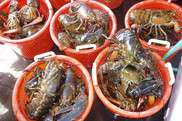
A new study projects significant changes in the habitat of commercially important American lobster and sea scallops on the Northeast U.S. continental shelf. The study used a suite of models to estimate how species will react as waters continue to warm. The researchers predict that American lobster will move further offshore and sea scallops will shift to the north in the coming decades.
|
Northeast Observer Waiver Extended Through June 30

NOAA Fisheries has extended the waiver granted to vessels with Greater Atlantic Region fishing permits to carry human observers or at-sea monitors through June 30, 2020. We intend to begin redeploying observers and at-sea monitors on vessels fishing in northeast fisheries on July 1.
|
Flying High to Save North Atlantic Right Whales
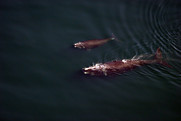
Imagine flying in a small twin engine plane above the Atlantic Ocean for 6 hours. Your body is folded into a small window bubble, your eyes are focused—looking for the slightest movement in the water below. You are searching for signs of right whales. These right whale aerial surveys give scientists and managers critical information needed to help protect one of the most endangered whales in the world.
|
eMOLT - 19 Years Connecting Scientists and Fishermen
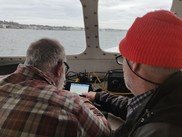
The Environmental Monitors on Lobster Traps (eMOLT), a partnership between our oceans and climate branch and fishermen, continues to expand. This project began in 2001 with approximately 50 New England lobstermen installing temperature sensors on traps. The project now includes other gear types like trawls, scallop dredges, and longlines, and allows real-time telemetry to shore. The project reached two milestones recently—its fifth anniversary of real-time telemetry and more than 10,000 hauls reported. The 8 million (and counting) observations improve local ocean models and are available to boat captains to refine their fishing effort.
|
Technology Unlocks the World of Beaked Whales
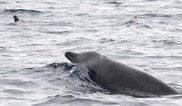
Who would ever imagine that in the 21st Century we would still be documenting and discovering new species of whales? Here in the North Atlantic Ocean there are six species of beaked whales. Relatively little is known about most of them, especially the elusive True’s beaked whale. Few have been seen or documented, but thanks to technology, we are starting to learn more about these mysterious whales.
|
Study Focuses on Striped Bass
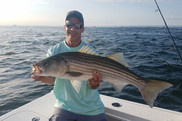
A recent study by Science Center scientists sheds light on possible actions needed to rebuild the Atlantic striped bass fishery while minimizing adverse impacts to anglers. Andrew Carr-Harris and Scott Steinback evaluated the immediate economic and biological impacts of different types of recreational Atlantic striped bass fishing policies. Results of their study were published in Frontiers in Marine Science. Understanding how anglers respond to management changes is key to rebuilding overfished stocks like Atlantic striped bass.
|
Upcoming Assessment Peer Reviews
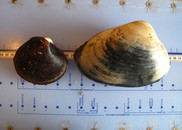
From June 22-25 the spring management track assessments will be peer reviewed. These assessments include Atlantic herring, Atlantic surfclam, butterfish, and longfin inshore squid. The results of these assessments will be used to inform fisheries management. During July 7-9, the Transboundary Resources Assessment Committee will peer review the assessments for Eastern Georges Bank cod and haddock, and Georges Bank yellowtail flounder. In September, assessments for groundfish species and sea scallops will be peer reviewed.
|
Meet Vince Saba, Fisheries Biologist
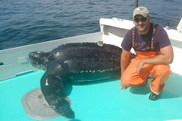
We continue our series to introduce the people who work at the Northeast Fisheries Science Center. Each month we feature a new "face" from the Center's five laboratories. We share with you a bit about who they are, what they do at the Center, and what they enjoy doing in their spare time. Vincent Saba from our ecosystems dynamics and assessment branch applies high-resolution climate models to research questions.
|
NOAA Live! 4 Kids Webinars
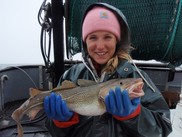
Tune in for more NOAA Live! Webinars this week, featuring NOAA experts/topics and a moderated question and answers session that gives you a peek at what our NOAA scientists do in all the various NOAA offices. These webinars are geared toward grades 2 to 8 and allow students to connect with scientists. Webinars are streamed via GoToWebinar, last between 45 and 60 minutes, and are recorded.
|
Milford Welcomes New Staff
Our Milford lab is a world leader in aquaculture science, thanks in large part to the dedicated staff and brilliant minds who work there. Recently we've had the pleasure of welcoming two new hires to our Milford lab. Genevieve Bernatchez is a physical science technician who will keep our lab's instruments running smoothly. And shellfish biologist Katie McFarland will focus on bivalve aquaculture, conservation, and response to environmental change. |
|
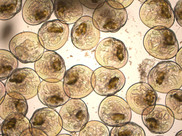 |
With Healthy Habitats You Get More Fish

Healthy habitats are productive habitats. They provide food and shelter for fish and help to maintain sustainable fish populations and fisheries that produce the seafood that we all love and depend on. Everyone benefits when marine habitats are protected. Working side-by-side with fishermen, there are many things we do at NOAA Fisheries to reduce some of the negative impacts of fishing gear on sensitive fish habitats.
|
|
|
Upcoming Events
COVID-19: We continue to plan events, but they may be delayed, cancelled, or moved to a virtual platform closer to their date.
June 15 Baird Symposium Webinar. Offshore Renewable Energy in the US: Learning as We Go
June 22-25 Spring Management Track Assessment Peer Review, Woods Hole, MA
July 7-9 Transboundary Resources Assessment Committee Peer Review
|
|
|
|